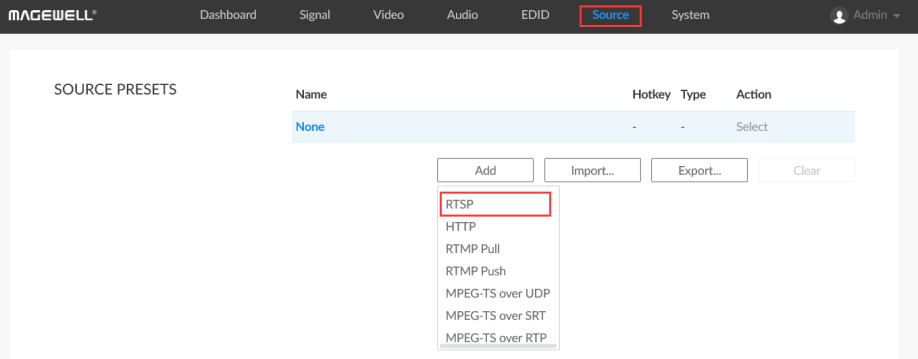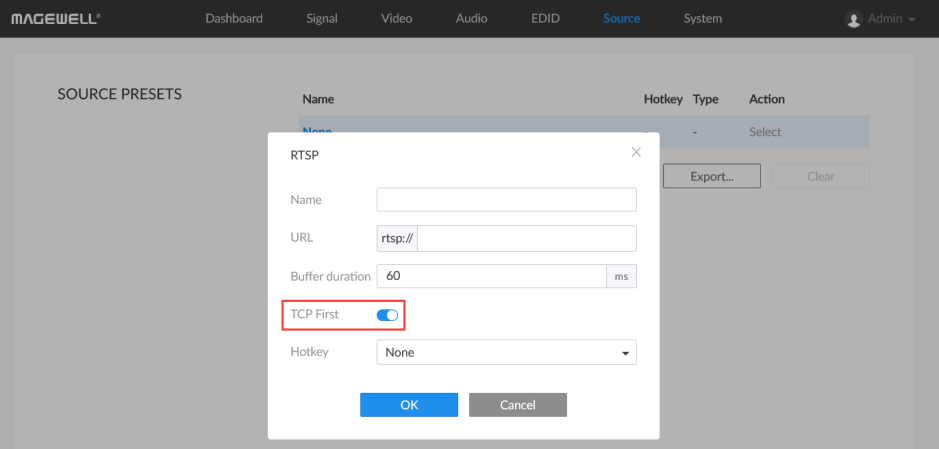How to Select the Transport Mode for RTSP Streams with Magewell Pro Convert Decoders
With the release of new firmware V1.1.652, Magewell's Pro Convert decoders now support a choice of TCP or UDP transport when decoding RTSP/RTP streams. This blog explains how to configure the decoder's RTSP transport mode.
1. Log into the Web GUI of the decoder. Choose "Source" in the menu, then click "Add" in "SOURCE PRESETS" and select "RTSP" in the drop-down list.

2. When receiving RTSP streams, Magewell Pro Convert decoders can use TCP or UDP for the underlying RTP transport protocol. The transport mode can be selected with the "TCP First" switch.
When "TCP First" is turned on, the decoder preferentially uses RTP over TCP to pull the stream from the encoder (or server). If the encoder does not support TCP, Pro Convert will switch to RTP over UDP.
Similarly, if "TCP First" is turned off, the decoder preferentially uses RTP over UDP to pull the stream from the encoder or server. If a UDP connection cannot be established (for example, if it is blocked by a firewall), the decoder will be unable to pull the stream and will switch to RTP over TCP.

Compared with TCP, UDP is a connectionless protocol that has lower transmission latency but without the lost packet retransmission provided by TCP. UDP can simplify the handshake process between server and client, and reduce the round-trip times of network communication, making it suitable for scenarios with high real-time requirements. For applications like surveillance and video conferencing, we recommend users to use UDP First (i.e., turning off “TCP First”) transport mode.
In environments where firewall restrictions preclude UDP usage or users need to transmit RTSP/RTP streams through Wi-Fi or 4G/5G mobile networks, TCP can improve the stability of audio and video transmission, so we recommend users turn on “TCP First”.

 Arabic (UAE)
Arabic (UAE) 





